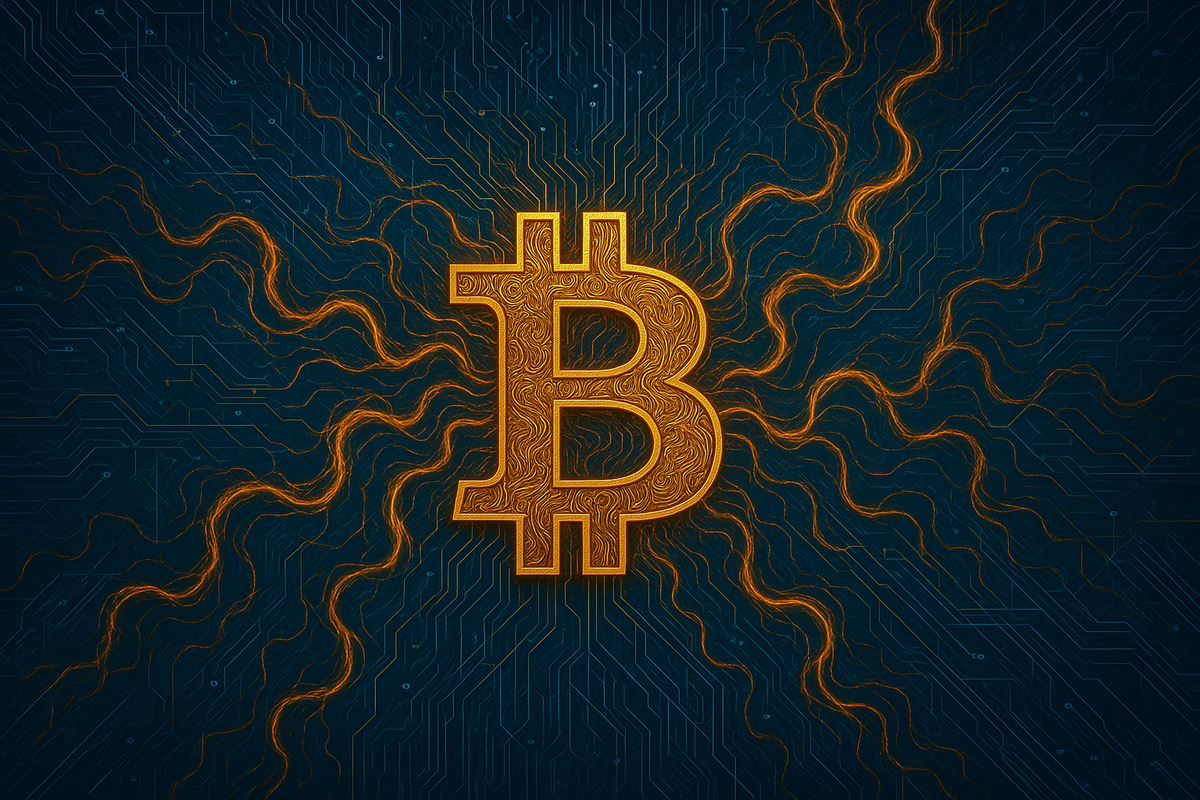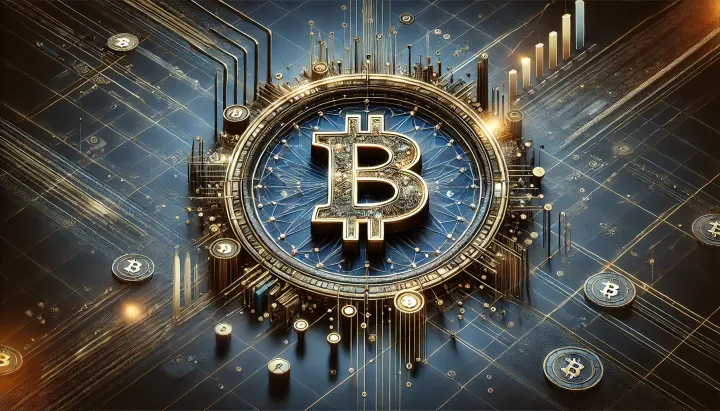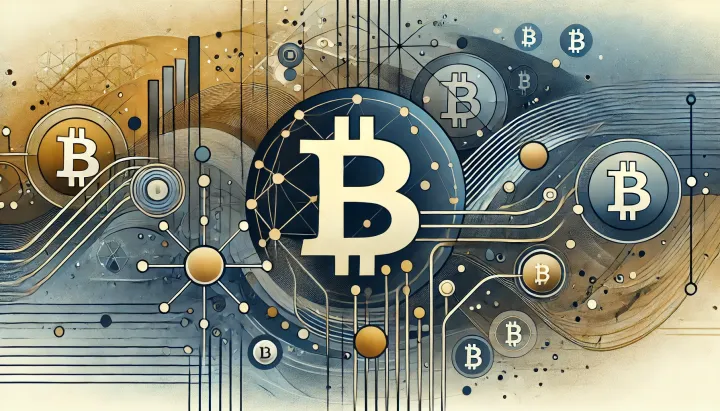Bitcoin Governance and Tokenization Debates
The April 08, 2025 episode of the Bitcoin Infinity Show featured Patrick Lowry examining debates over governance, tokenization, self-custody, scalability, and regulatory impacts on Bitcoin.

- My 'briefing notes' summarize the content of podcast episodes; they do not reflect my own views.
- They contain (1) a summary of podcast content, (2) potential information gaps, and (3) some speculative views on wider Bitcoin implications.
- Pay attention to broadcast dates (I often summarize older episodes)
- Some episodes I summarize may be sponsored: don't trust, verify, if the information you are looking for is to be used for decision-making.
Summary
The April 08, 2025 episode of the Bitcoin Infinity Show featured Patrick Lowry examining debates over governance, tokenization, self-custody, scalability, and regulatory impacts on Bitcoin. Lowry details how preserving decentralization is critical amid evolving financial and technological pressures. This conversation is central for investors, policymakers, and developers navigating Bitcoin’s future.
Take-Home Messages
- Bitcoin Governance: Emphasize user-driven protocol controls to safeguard decentralization.
- Tokenization Caution: Prevent initiatives that compromise Bitcoin’s inherent security and core principles.
- Self-Custody Priority: Develop secure, user-friendly methods to maintain individual and institutional Bitcoin ownership.
- Scalability Solutions: Innovate strategies to alleviate block space constraints without eroding network integrity.
- Regulatory Impact: Adapt to evolving legal frameworks to ensure smooth integration of stable assets within Bitcoin.
Overview
Patrick Lowry recounts his personal Bitcoin journey from his early days with small investments to his leadership role at Samara Asset Group. He details early experiences that shaped his perspective on Bitcoin’s transformative potential for financial markets.
Lowry provides a deep critique of tokenization and its potential to dilute Bitcoin’s inherent decentralized nature. He draws attention to past events, such as the Blocksize wars, as emblematic of power struggles that risk centralization. His arguments underscore that maintaining user-driven control is essential for Bitcoin’s long-term integrity.
The discussion turns to the challenges of self-custody, where Lowry highlights the risks and complexities of managing private keys securely. He emphasizes that both individual users and institutions must balance operational efficiency with the imperatives of decentralization. Technical trade-offs, like the scarcity of block space, are explored as critical hurdles for network scalability.
Lowry further examines the interplay of evolving regulatory frameworks and the integration of stablecoins such as Tether within the Bitcoin ecosystem. He points out that legal and operational uncertainties may impede or enhance Bitcoin’s role in global finance. His analysis calls for a reconciliation between innovative technical solutions and traditional legal structures to safeguard Bitcoin’s foundational attributes.
Stakeholder Perspectives
- Investors: Demand secure, transparent exposure to Bitcoin while evaluating treasury strategies.
- Regulators: Seek frameworks that promote innovation without undermining decentralized principles.
- Developers: Aim to enhance network resilience and scalability without sacrificing security.
- Institutional Actors: Focus on leveraging Bitcoin-denominated funds amid changing legal landscapes.
- End Users: Prioritize ease of self-custody and robust security measures in everyday transactions.
Implications and Future Outlook
The discussion highlights a critical juncture where preserving Bitcoin’s decentralized ethos remains paramount, even as tokenization and additional functionalities are explored. Layer 2 innovations, such as Lightning Network, and improved custodial solutions could support global adoption while retaining the network’s integrity. These technological advancements may also serve as a bulwark against centralizing pressures from large market players.
Evolving regulatory environments introduce both challenges and opportunities. Future policies must reconcile traditional financial oversight with the unique attributes of a decentralized money system. Such frameworks will influence how stable assets and tokenization initiatives coexist within the Bitcoin ecosystem.
The broader implications extend to societal and economic domains, where enhanced trust mechanisms and efficient dispute resolution can boost user confidence. A balanced approach to scalability and security will be crucial for ensuring that Bitcoin remains a resilient financial asset.
Some Key Information Gaps
- How can the Bitcoin ecosystem balance tokenization initiatives with preserving its inherent decentralized integrity? This question is critical as it addresses the tension between expanding functionality and maintaining the core principles that safeguard Bitcoin's value. Its answer will guide both technical development and policy frameworks amid rising interest in asset tokenization.
- What strategies can be implemented to overcome the challenges of self-custody while maximizing security for individual and institutional users? This research is essential for ensuring that Bitcoin remains accessible and secure for all stakeholders. It has significant implications for user adoption and broader confidence in decentralized financial systems.
- How can scalability solutions be developed to effectively address block space scarcity without compromising decentralization? This question holds particular importance due to its potential impact on transaction efficiency and long-term network robustness. Its resolution is key to supporting increased global use of Bitcoin.
- What dispute resolution frameworks can be designed that integrate blockchain-based contract enforcement with traditional legal systems? Addressing this question is crucial for ensuring trust and clarity in a system increasingly reliant on decentralized technologies. It carries high policy relevance and may influence cross-sector collaboration in legal and financial domains.
- How will evolving regulatory environments impact the integration of stable assets like Tether within the Bitcoin ecosystem? This inquiry is significant as it touches on the intersection of technology, law, and global economics. The answer could shape future regulatory approaches and influence how digital assets co-evolve with established financial instruments.
Broader Implications for Bitcoin
Monetary Integrity and Sound Money
The conversation reinforces that Bitcoin’s enduring value is rooted in its design as a scarce and immutable form of money. Debates around tokenization underscore the risk of diluting Bitcoin’s unique monetary properties, which could weaken trust among investors and users. Preserving these core principles is imperative for maintaining Bitcoin’s role as the definitive store of value.
Institutional Adoption and Financial Innovation
The strategic use of Bitcoin as a treasury reserve asset signals a shifting paradigm in institutional investment. As companies increasingly allocate capital into Bitcoin-denominated funds, new financial instruments and investment vehicles centered on Bitcoin are emerging. This trend may accelerate mainstream acceptance and fortify Bitcoin’s position as a key asset class in global portfolios.
Self-Custody and Investor Responsibility
Emphasis on self-custody highlights the crucial need for investors to manage their own Bitcoin securely. Robust self-custody practices not only safeguard individual assets but also contribute to the overall health and resilience of the Bitcoin network. Enhanced education and improved custody solutions will be vital in fostering a culture of responsible asset management.
Scalability and Network Resilience
The persistent challenge of block space scarcity calls for innovative scalability solutions that do not compromise Bitcoin’s decentralization. Enhancements such as effective Layer 2 solutions could significantly improve transaction efficiency, ensuring the network remains robust under growing demand. Achieving scalability while maintaining core security features is essential for Bitcoin’s long-term functionality as the world's premier form of money.



Comments ()